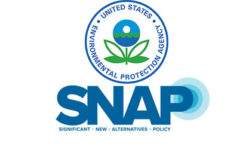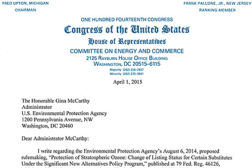Home » Significant New Alternatives Policy
Articles Tagged with ''Significant New Alternatives Policy''
They affect the refrigeration industry in different ways
Read More
Congressman Questions the EPA about HFCs
US Representative Voices Concerns About Proposed Restrictions
Read More
Carefully Embracing Flammable Refrigerants
Additional Uses for Flammables Require Approval Process
Read More
A Folk Hero? Congressman Pens Tough Letter to EPA
Kentucky Rep Expresses Concerns over HFC Delistings
May 4, 2015
EPA Approves SNAP Substitutes
New Rule Expands List to Include More Low-GWP Alternatives
March 23, 2015
March 3, 2015: EPA Approves New Low-GWP Refrigerants
Final Rule Expands the List of SNAP-Approved Substitutes
March 3, 2015
Copyright ©2024. All Rights Reserved BNP Media.
Design, CMS, Hosting & Web Development :: ePublishing









